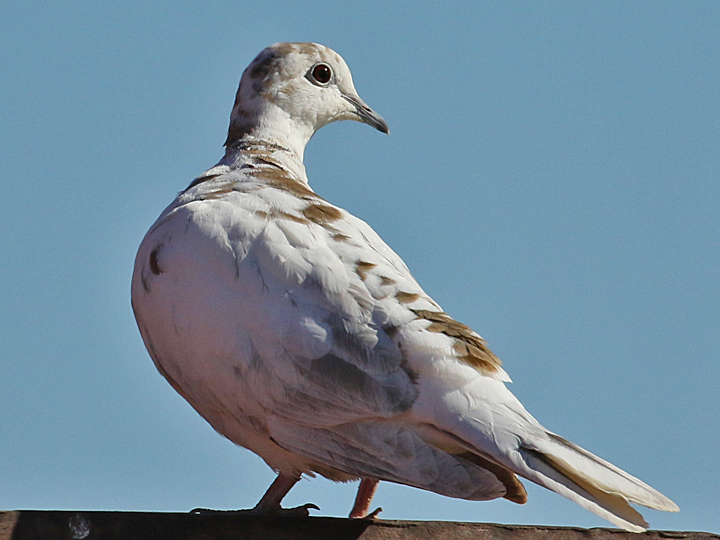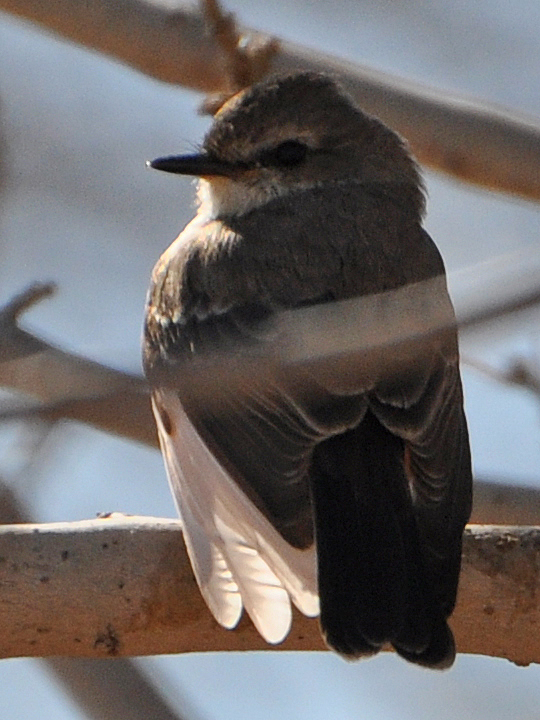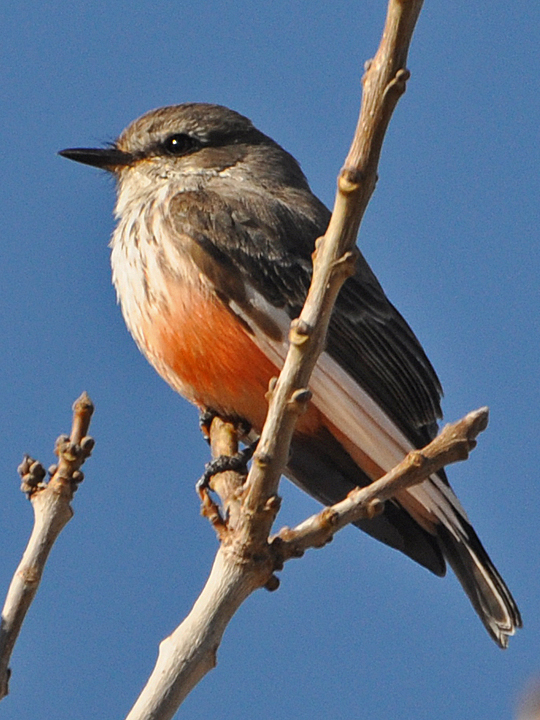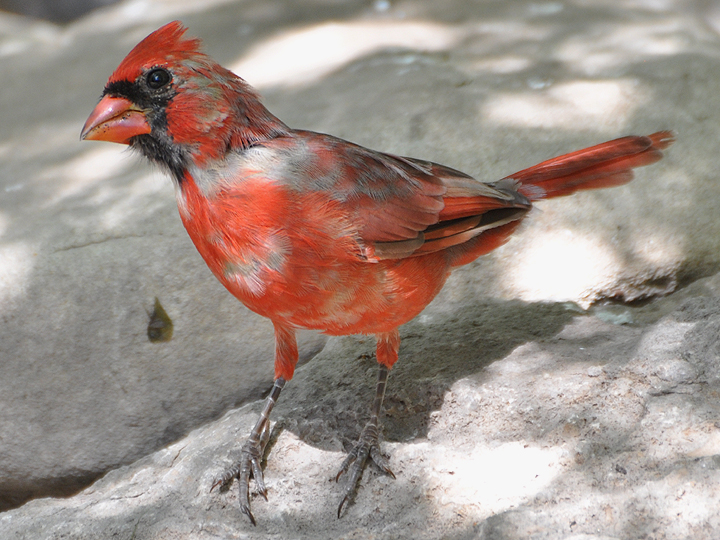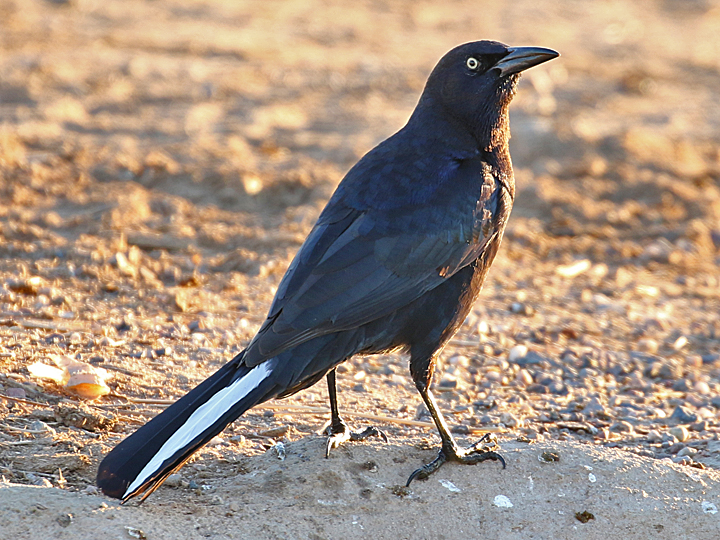A Review of Nomenclature for Avian Color Aberrations by Hein van Grouw
Recently, North American Birds 73(1): 36-51, 2022, published by the American Birding Association, featured “A Review of Nomenclature for Avian Color Aberrations” by Hein van Grouw. I have encountered some of these aberrations in the field so it was exciting to learn the biological mechanics involved. What follows is a summary of that article with some additional facts about bird colors and examples of color aberrations I’ve encountered.
Three pigment groups are found in birds – psittacin, carotenoid and melanin. Psittacin is only found in parrots, and carotenoids (yellow, orange, red, and greenish) are from diet and rarely occur. We will only cover the third pigment, melanin, from the Greek melanos – dark-colored, which comes in two forms: eumelanin and phaeomelanin. Eumelanin is seen as black, gray, or dark brown. Phaeomelanin creates warm reddish brown to pale buff. A melanin cell can produce both eumelanin and phaeomelanin pigments but not at the same time.
Melanin cells produce pigments which are transported as granules and deposited to feather cell walls. Think of a feather cell as a white canvas. The cell color comes from pigment granules of various colors and quantities accumulated in the cell. All three pigments can be deposited in the same cell.
Melanin strengthens feathers. Birds like the snow goose, white ibis, and most gulls have black outer primaries or feather tips that take advantage of this trait.
So where do Blue Jays and Green Jays get their colors? Blue in birds is not a pigment; it is created through refraction like light passing through a prism. Green Jays combine blue refraction with a yellow carotenoid to create its green appearance. Hummingbird gorgets also use refraction to create their color and iridescence. Blues, violets, and white are all structural rather than pigments.
Melanin is the pigment most often associated with avian color aberrations. There are four categories of melanin mutations. They are:
- Cell development defects come in two groups, melanin cells which creates the pigment granules, are absent, or they disappear or become less productive progressively. The first group results in “leucism” which is the absence of melanin. The carotenoid pigments, if any, remain present. The extent can vary from just one feather to completely white, and lasts for the life of the bird. As a side note, leucocephalus, the species name for Bald Eagle, is Greek for white head. In the second group, “progressive graying” the bird is normal as a juvenile but becomes progressively whiter with age, usually starting with the head.
- There are three types of defects in melanin synthesis due to the problems with the enzyme tyrosinase that should be naturally present in melanin cells. When tyrosinase is totally absent the defect produces “albinism”. An albino lacks melanin in feathers, eyes, and skin, resulting in white feathers and pink eyes and feet. Albino birds still show carotenoid pigments if they are present. Albino birds usually don’t live long due to eyes that are highly sensitive to light with poor depth perception.
The second melanin synthesis defect occurs when the synthesis is incomplete due to less active tyrosinase. The eumelanin pigment makes black feathers appear brown, or brown feathers appear buff brown, and thus is labeled “brown”. It is the most common defect in birds but difficult to classify as the feathers bleach easily and become very pale to white within months of a molt.
The third melanin synthesis defect results from a reduction of melanin and the remaining melanin shows reduced color. This condition is called “ino” and manifests as pale brown replacing black, whilst reddish or yellowish brown is barely visible.
- Defects in pigment deposit into feathers results in granules being clumped together instead of evenly deposited in the feather cell. So the melanin color is correct, but the distribution causes the color to change from black to blue-grayish tones. This is called “dilution” and is rare.
- Defects in the type of melanin produced results in the over/under production of granules. Through a mutation, the melanin cell may only produce one or the other of the two pigment types, or over produce one. The typical result is an increased dark pigmentation which is called “melanism”.
I hope this wasn’t too technical and what came through is the variety of ways that aberrant plumage can be created. Make sure that you are mindful of these possibilities when confronted by a strange looking bird. Finally, not all plumage discoloration comes from mutations. Sticking your beak into flowers will give you a yellow face, rooting around a burned tree will blacken your feathers, and applying iron-rich mud while preening your gray feathers, a practice of Sandhill Cranes, will turn them reddish-brown. Have fun out there!
Curve-billed Thrasher, INO or Brown
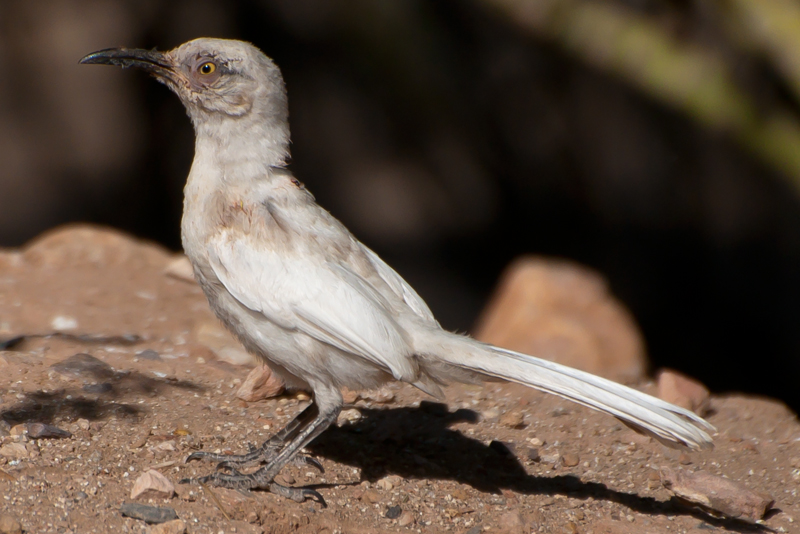
Curve-billed Thrasher CBTH
Curve-billed Thrasher, Kearny, AZ Ino or brown. The remaining color in the plumage suggest a brown-tone rather than a gray-tone, so it is most likely a melanin synthesis affecting mutation. The plumage is heavily bleached further by the light. Most likely it was a darker form of Ino, or the mutation Brown. Would require in-hand inspection to determine the specific mutation.
Eurasian Collared-Dove INO
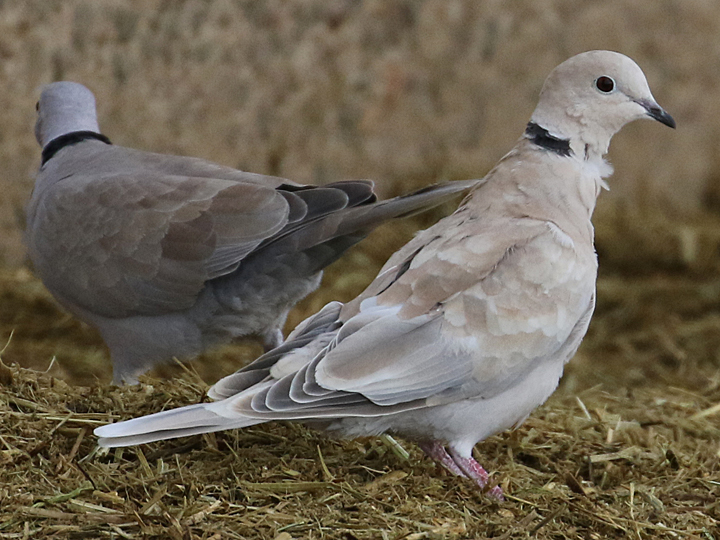
Eurasian Collared-Dove EUCD
Eurasian Collared-Dove, Gilbert Dairy, AZ, Ino
Eurasian Collared-Dove, leucistic
Eurasian Collared-Dove, Gilbert Dairy, AZ Leucistic partly juvenile plumage, all large wing feathers (primaries, secondaries and tertials) juvenile and still ‘grizzled’ due to the mix of white and colored barbs, whereas in adult plumage these feathers are either all white or fully colored.
Female Vermilion Flycatcher, leucistic
Female Vermilion Flycatcher, White Water Draw, AZ, leucistic
Brown-headed Cowbird, progressive graying
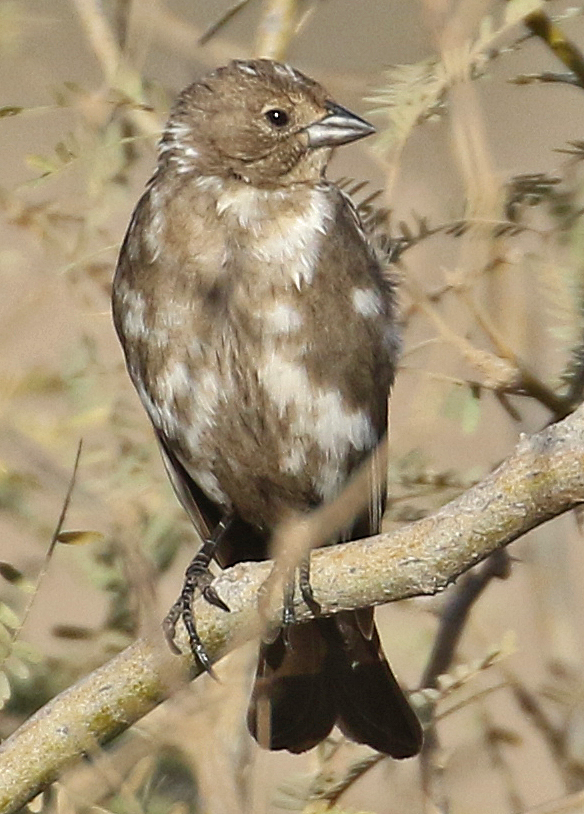
Brown-headed Cowbird BHCO
Brown-headed Cowbird, Santa Cruz Flats, AZ, progressive graying
Canada Goose, progressive Graying
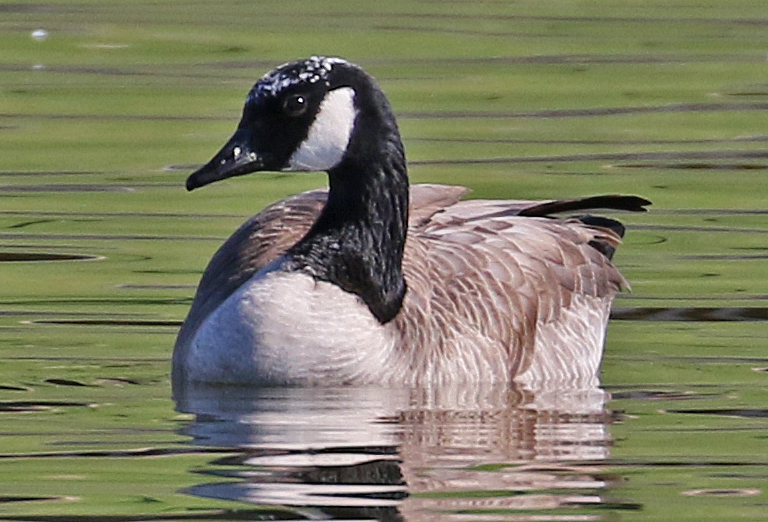
Canada Goose CAGO
Canada Goose, Sun Lakes, AZ, progressive graying
Immature Northern Cardianal
Northern Cardinal, Laguna Atascosa NWR, TX, juvenile feathers bleached by sunlight
Northern Flicker, soot covered feathers

Northern Flicker NOFL
Northern Flicker, Las Vegas NWR, NM, stained feathers (bird on right)
Eurasian Collared-Dove, leucistic

Eurasian Collared-Dove EUCD
Eurasian Collared-Dove, Gilbert Dairy, AZ leucistic
Eurasian Collared-Dove, leucistic

Eurasian Collared-Dove EUCD
Eurasian Collared-Dove, Gilbert Dairy, AZ leucistic
Leucistic Great-tailed Grackle

Leucistic Great-tailed Grackle
Leucistic Great-tailed Grackle
Leucistic Black-chinned Hummingbird

Leucistic Black-chinned Hummingbird
Leucistic Great-tailed Grackle
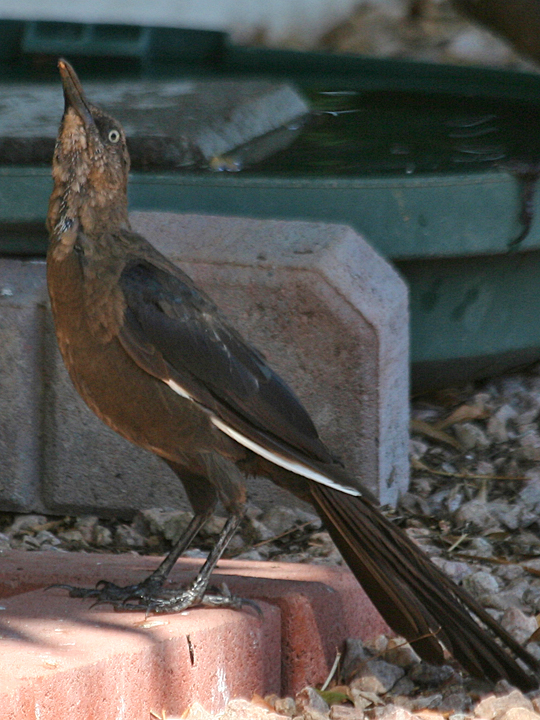
Leucistic Great-tailed Grackle
Leucistic Great-tailed Grackle
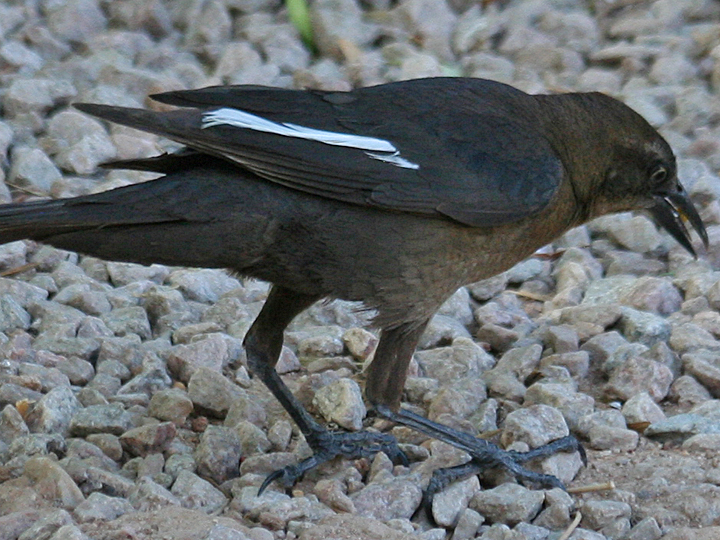
Leucistic Great-tailed Grackle
Leucistic Great-tailed Grackle
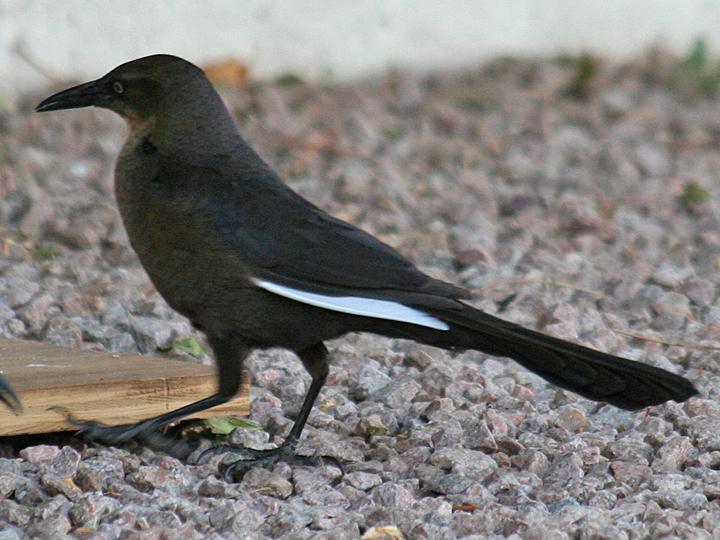
Great-tailed Grackle
Leucistic Great-tailed Grackle
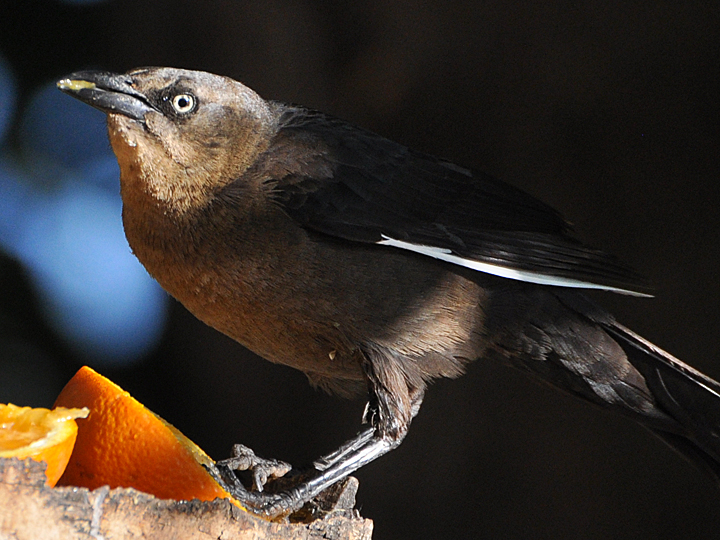
Leucistic Great-tailed Grackle
x

